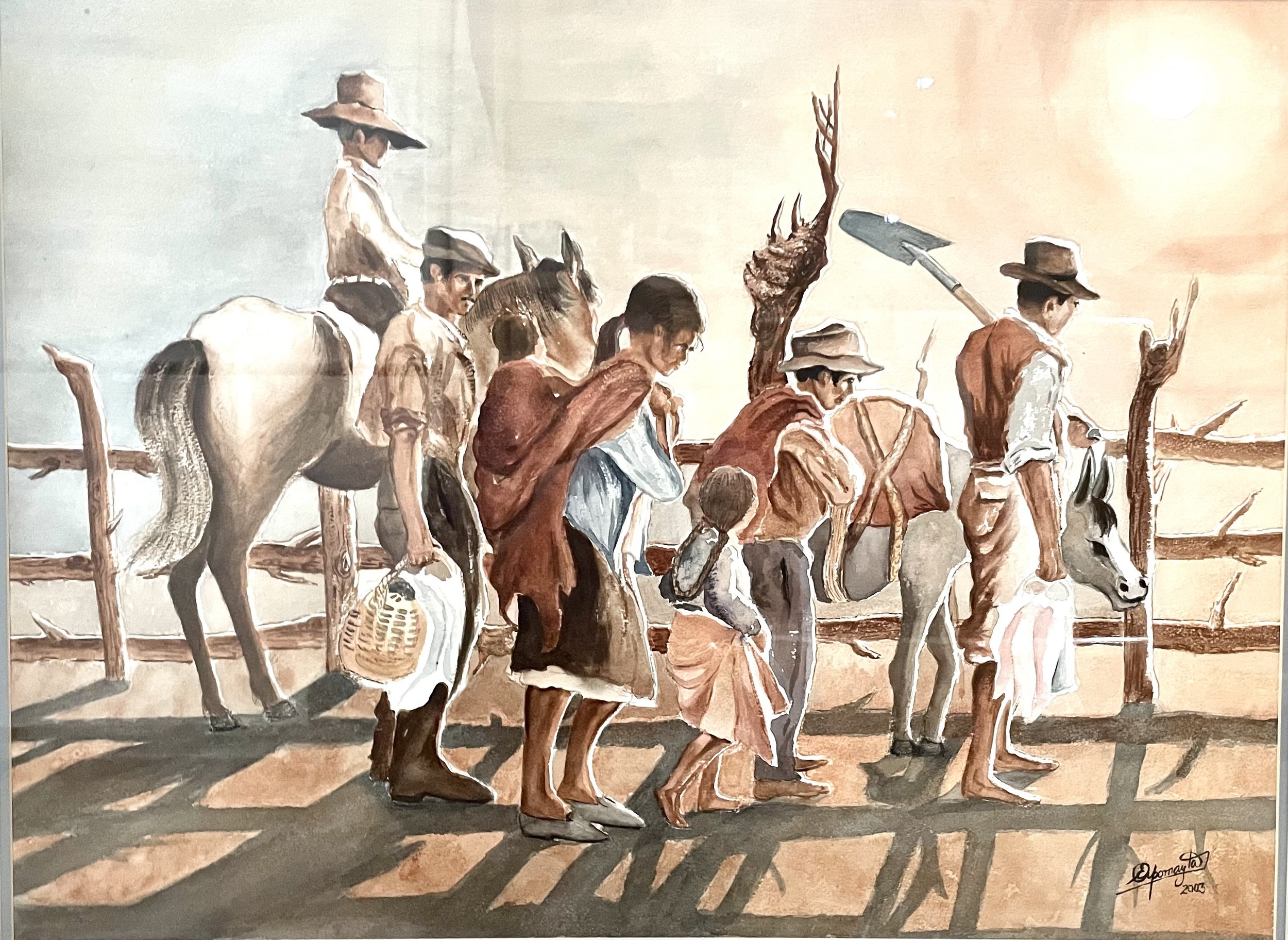
Born and raised in Puno, Peru, Ernesto Apomayta-Chambi was identified as an artistic prodigy at the age of five. As a young boy, Ernesto was influenced and inspired by the natural marvels surrounding the humble home he shared with his family. In close proximity to shimmering Lake Titicaca, the striking beauty of the Andes and the awe-inspiring Incan ruins of his ancestors, Apomayta was spiritually compelled to express his wonder visually through his paintbrush. A direct descendant of the legendary photographer, Martin Chambi, Apomayta derived inspiration from the same native influences and his legacy that encouraged Apomayta to fulfill his own artistic destiny.
At age 17, Apomayta won the opportunity to study at the prestigious Carlos Baca Flor Regional School of Fine Arts in Arequipa, Peru. Under the tutelage of masters of Pre-Columbian art, Apomayta grew both artistically and spiritually. After incorporating knowledge from the most learned painters in the world, Apomayta continued to fully develop his own personal style by delving into the experiences of his childhood.
The Amazing Life of Ernesto Apomayta
Through the assimilation of other cultures, traditions and lifestyles, Ernesto Apomayta has developed his own magnificent style that expresses the side-by-side harmony of East meeting West, past meeting present, nature meeting industrialization - a style that has gained him international acclaim. Apomayta expresses the urge of his spirit through watercolors, oils, natural inks, acrylics and charcoal applied to textured paper, rice paper, silk and the walls of structures. He speaks five languages, holds a doctorate in Pre-Columbian art history and is an internationally recognized authority on Chinese art.
Today Ernesto has returned to his beloved Peru. He lives in Cusco, and is devoted to aiding Incan villages high in the Andes isolated from the modern world. He invites you to enjoy the beauty of his art, and own a piece of his legacy. View this online gallery, then contact us:
Growing up in the folkloric capital of Peru, Apomayta recalled the magnetic appeal of the stories he heard as a boy about the people, culture and traditions of China. When he was offered a scholarship to study art among the Chinese masters in Beijing, he said goodbye to his homeland and journeyed to communist China, a place where, at that time, foreign faces were as strange to see as Apomayta’s native language was to be heard. In China, Apomayta learned that the indigenous traditions of his home village of Puno were born from a fusion of Asian and Western cultures - Apomayta realized that the legacy of Asia ran deep in his veins.



